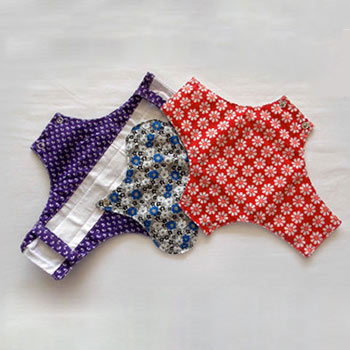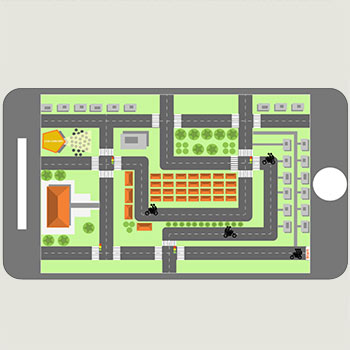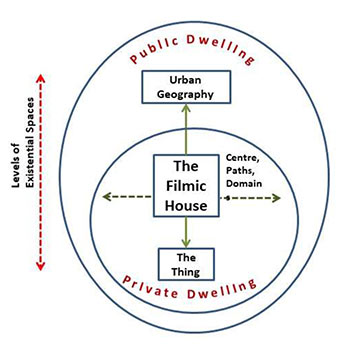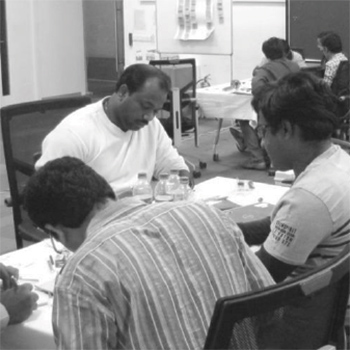Thesis
Batch 2020
(8 items)
ThesisBatch 2020
(8 items)
(8 items)
by Indrani De Parker; supervisor/s: Prof. Raja Mohanty
by Lakshmi Murthy; supervisor/s: Prof. Anirudha Joshi
(a) Sustainability
(b) Social Change
(c) Participatory Social design
(d) Action research.
We explored the research questions through experiments, cross over trials, studies and personal communication with stakeholders, while considering three products, namely TP, DSNs and Uger. This thesis proposes two tools for sustainable menstruation management for rural communities. The first tool called PASS is an assessment tool that can be used to score and compare systems for sustainable menstruation management. The second tool, Uger pads, is a tool for managing menstrual discharge in a sustainable way. This thesis, by proposing these two tools, lays out multiple possibilities for future sustainable interventions for menstruation management.
by Purba Joshi; supervisor/s: Prof. B. K. Chakravarthy
by Sandeep Athavale; supervisor/s: Prof. Girish Dalvi
by Saurabh Singanapalli; supervisor/s: Prof. Nina Sabnani
by Smita Dalvi; supervisor/s: Prof. Nina Sabnani
by Sharmila Sinha; supervisor/s: Prof. B. K. Chakravarthy
The rapidly changing world scenario and its implications on social needs and behaviours in this new century have stirred the focus of organisations towards the fostering of new ideas. The phenomenon of idea generation has been studied in the field of cognitive psychology in order to better understand the workings of the mind. Substantial innovations often result from transferring solutions from one industry or domain to another by forming correspondence between elements of representation, creating a path for cross-transfer. Analogies possess the potential to juxtapose knowledge from one domain to another, following the principle of making "the strange familiar and the familiar strange" (Gorden, 1961).
In the creative field of design, expert designers often use analogies for strategic problem solving and new idea generation based on prior experiences (Dunber & Blanchettel 2001). Therefore, in the case of novice designers, inculcating this way of thinking can be a way to overcome linear, patterned thinking and expand the boundaries of creative exploration. This stems from the tendency to search for solutions that have previously shown results or search for results within an area of expertise to override the fear of failure. This has led most "design by analogy" studies to focus on data mining (Altshuller 1984) using computational support for big data management and retrieval. While studies reveal that analogy usage is pervasive in many disciplines, there are very few studies that show how and why novice product designers face challenges when using analogy for ideation.
by Amar Kundu; supervisor/s: Prof. Gaur G. Ray
India is the seventh-largest country by geographical area and the second-most populated country in the world. Almost ninety-four percent of the Indian workforce is working in the unorganised sector. Unorganized activities are labor-intensive, necessitating low-level skills and relying on age-old, primitive technologies that pose occupational hazards. Occupational stress can be divided into four major classes, such as physiological stress, postural stress, psychological stress, and environmental stress. The earlier research on the unorganised sector recommends ergonomic design interventions to improve workstation ergonomics. more ergonomic. Mechanization or automation in India, like in other developed countries, is prevalent. An unorganised sector is difficult. Therefore, it needs a context-specific, low-cost design. intervention from the viewpoints of sustainability, cost-effectiveness, and manpower employment, which can reduce occupational stress. It is essential to find out the most significant In the unorganised sector, there is a pain point for doing context-specific design interventions. Hence, the prioritisation of the most painful stress among all other occupational stresses is most important. A physiologically stressful job demands a high physical workload and needs to be redesigned to provide leverage or low-cost mechanization. The pastorally stressful job must be eliminated. change the working posture. The causes of psychologically stressful jobs must be discovered. psychological stress, reorganise the job, and improve the employer-employee relationship. For an environmentally stressful job, the working environment needs to be modified by the worker. acceptable limit. An environmental stressor can be managed at the source or in between the source and the subject (like using PPE).
The Minimum Wage Act, 1948, helps with the fixation and execution of minimum wages to prevent exploitation of labour through the payment of low wages. The minimum wage rate can be fixed at a) a time rate, b) a piece rate, c) a guaranteed time rate, and d) an overtime rate. The Indian Labour Conference (1957) had come up with a norm that should be considered during minimum wage fixation. Minimum wages in India's unorganised sector are set at 2700 calories per day. Ergonomics can validate unorganised workers' energy requirements. The minimum wage fixation committee considers four consumption units per earner. But in the Indian scenario, there are six consumption units per earner (worker, spouse, two kids, and parents). Social scientists must reconsider wage fixation norms in light of this.







